THE LURE OF A MAID’S TOILET (1907)
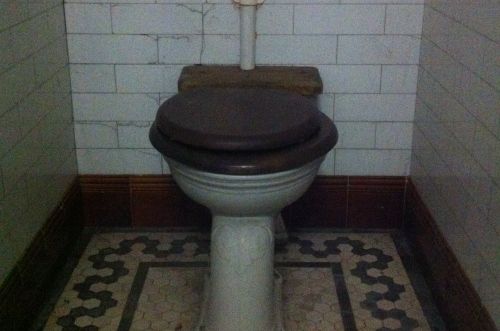
******************************************************************************************************************************** Brownstone Detectives investigates the history of our clients’ homes. The story you are about to read was composed from research conducted in the course of one of those investigations. Do you know the history of YOUR house? ******************************************************************************************************************************** As Bay Ridge developed in the early 20th century, and residents moved deeper into South Brooklyn, developers used some intriguing townhouse features to lure buyers to the section of Brooklyn. One of those features was a dedicated commode. SELLING BAY RIDGE With an open-carriage automobile of the period parked purposefully outside these new “one family stone houses,” the Bay Ridge Development Company confidently announced in their advertisement that it was building “the entire block on Seventy-fifth St. Parkway, Between 4th and 5th Aves.” Bay Ridge was becoming the latest new neighborhood around this time, as developers expanded out from the Park Slope area further south through open fields and towards the city’s pleasure grounds – Coney Island. Suddenly, those fields were becoming more and more attractive as speculators snatched up lots and blocks and began construction. The houses in this particular ad were all “of 7 rooms, bath, laundry,” and included a feature which dictated the class of these structures and their prime location – one which no well-heeled buyer could fail to notice – a “maid’s toilet.” The houses’s other features were “hardwood trim, attractively planned, superbly built,” and one that was rather recent for the time – “electric lights.” The company also offered two choices in ranges – both […]
WOMAN SURVIVES B’KLYN BRIDGE JUMP! (1900)
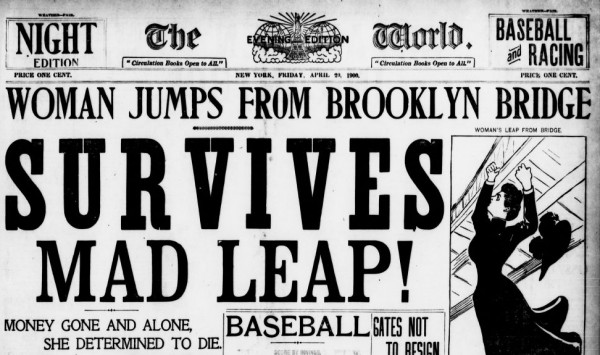
******************************************************************************************************************************** Brownstone Detectives investigates the history of our clients’ homes. The story you are about to read was composed from research conducted in the course of one of those investigations. Do you know the history of YOUR house? ******************************************************************************************************************************** Yellow Journalism was in its heyday in 1900, and Joseph Pulitzer’s “World” was right up there at the top of the whole heap of it. This is an example of the hype that existed back then, drawing readers into a version of the world that was part real and part made-up. The subject of this splashy front page story, Marie Rosalie Dinse, came to be the second woman to jump from the Brooklyn Bridge. Dinse, amazingly, survived this “mad leap,” surprising the physicians who attended her. While the New York World reporter who wrote this story included a number of facts in his story, he also took liberties to suppose a number of many more, weaving an account that was sure to enthrall readers and – more importantly – sell newspapers: “As she crossed the bridge the river looked so restful,” read the World article. “There was peace there. “She sought it.” The truth was, simply, she lost money is a boarding-house speculation. After the fall, she was taken to an asylum for treatment. Follow @BrownstoneDetec Share ———————————————————————————————————————– The Brownstone Detectives Brownstone Detectives is an historic property research agency. Our mission is to document and save the histories of our clients’ homes. From our research, we produce our celebrated House History […]
THE LION COMIQUE OF 276 CARLTON AVE (1930)
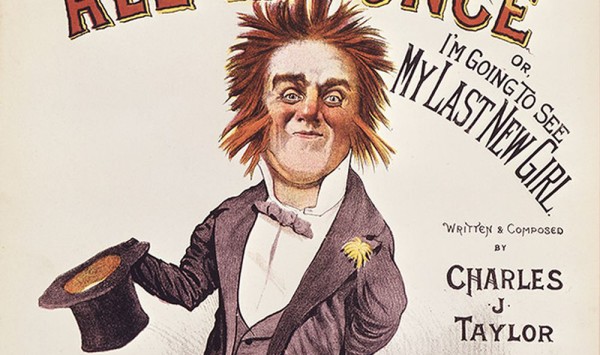
******************************************************************************************************************************** Brownstone Detectives investigates the history of our clients’ homes. The story you are about to read was composed from research conducted in the course of one of those investigations. Do you know the history of YOUR house? ******************************************************************************************************************************** Fred Roberts was known in the “seventies” as one of the great comic singers of the variety show. He sang the topical and comic songs that were then popular, often making them well-known himself. Brought over from London by the legendary Harrigan & Hart, Roberts had been known in the English music halls as a “Lion Comique” – a music hall character that was the heart throb of the Victorian era, holding the same cult status as today’s boy bands. According to The Victorian Music Hall: Culture, Class and Conflict, the songs the lions comiques sang were “hymns of praise to the virtues of idleness, womanising and drinking.” In Roberts’ songs, he “deliberately distorted social reality for amusement and escapism.” One critic in the late 19th century remarked that the Lions Comiques were “men who set women just a little higher than their bottle.” Roberts was to be Harrigan & Hart’s answer to the popularity of the famous impresario, Tony Pastor. He soon had a string of hits that were “hummed and whistled around the town” from the 1870s through to the early 20th century when he retired. Roberts’ first song, “Oh, Fred, Tell Them to Stop,” was such a huge hit that he decided to stay in the U.S. and […]
THE CANUCK NURSES OF 172 LAFAYETTE (1909)
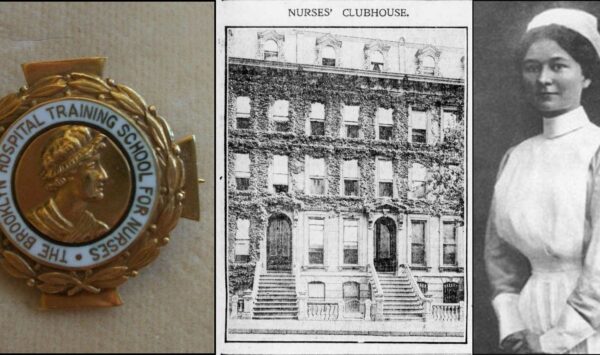
******************************************************************************************************************************** Brownstone Detectives investigates the history of our clients’ homes. The story you are about to read was composed from research conducted in the course of one of those investigations. Do you know the history of YOUR house? ******************************************************************************************************************************** During the late 19th century, when much of New York City’s brownstone stock was constructed, many of these townhouses were initially used as the clubhouses for any number of the organizations and clubs existent then. There were Republican and Democratic clubs, bicycling clubs, social clubs, actors’ guilds, athletic clubs, and countless other organizations dedicated to the betterment and/or pleasure of their memberships. Those clubs with the money and the membership were able to afford to purchase – or rent – a brownstone for the use of its membership. In 1909, at No. 172 Lafayette Avenue, a club for graduates of the “Brooklyn Hospital Training School for Nurses” – which was “always in reach of doctors” – was set up,” noted the Brooklyn Daily Eagle. The purpose of the club was as a social center and a business office for nurses, as well as a location where they could “entertain their friends.” The Nurses Club, only in existence for a “couple of years” by that point, had – in that short period of time – made “enviable progress.” Previously located at No. 255 Carlton avenue, it was not long before the capacity of that house was taxed to its limits. In 1909, the pressure became so great that this larger clubhouse on […]
TENDER FEET IN STUYVESANT HEIGHTS (1910)
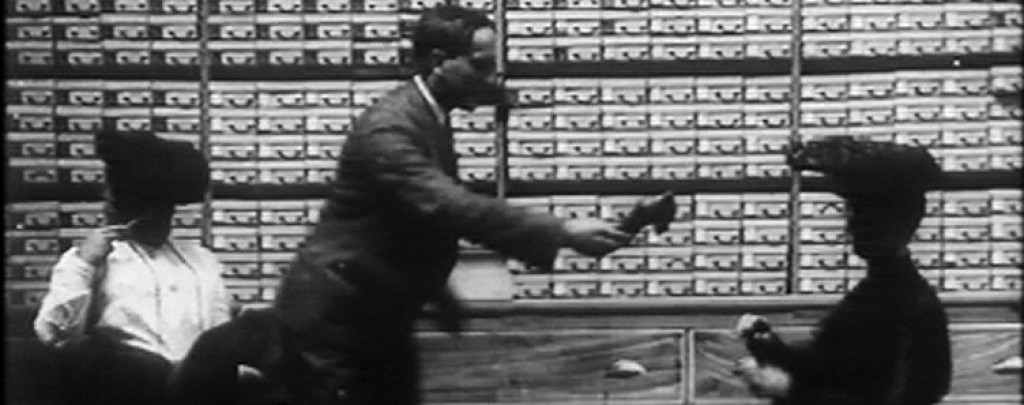
******************************************************************************************************************************** Brownstone Detectives investigates the history of our clients’ homes. The story you are about to read was composed from research conducted in the course of one of those investigations. Do you know the history of YOUR house? ******************************************************************************************************************************** Charles I. Clark seemed to be all about helping womens’ tired, aching feet. From 1900 until 1923, at the intersection of Halsey Street and Broadway, sat Clark’s shoe store, above which was posted a sign that ran the width of his building (at the cornice): “THE CLARK SHOE.” In Clark’s store, one of his shoe lines was “Grover’s Soft Shoes for Tender Feet,” a footwear design for women who were both sensitive and sensible. The location of his store was an excellent one. Just outside of it was the stairway leading to and from the Halsey Platform for the Brooklyn Rapid Transit elevated train. People heading into Manhattan passed his store on their way to the elevated trains, and those returning from “the City” detrained there. Additionally, in 1910, according to the Brooklyn Daily Eagle, Clark had invested in a major remodeling on the front of his store, which “considerably improved its appearance.” Clark had “electric lights in concealed prism reflectors in the ceiling” which gave “ample illumination after nightfall” and “made the store bright and cheerful.” So, there was every reason in the world for any woman who shopped along the Broadway business corridor to have purchased a pair of sensible shoes in Clark’s store – if she had tender […]
A BLACK PORTER ON WHITE 12TH ST (1901)
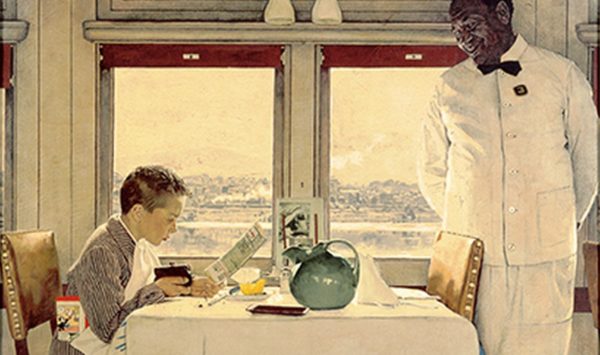
******************************************************************************************************************************** Brownstone Detectives investigates the history of our clients’ homes. The story you are about to read was composed from research conducted in the course of one of those investigations. Do you know the history of YOUR house? ******************************************************************************************************************************** Back in Victorian Brooklyn, segregated neighborhoods were the norm. The only blacks that most whites expected to see on their streets were those who worked there as maids or who participated in other working class trades. Blacks – commonly referred to then as “coloreds” or “Negroes” – rarely lived cheek-and-jowl with whites. On the rare occasion that a black family moved into a white neighborhood, an enormous amount of pressure was usually placed upon the family to move out immediately. It was for this reason that most neighborhoods remained segregated by the turn of the century. One such “Negro” family moved into the Gowanus section of Brooklyn in 1901, at No. 198 Twelfth Street, between Third and Fourth Avenues. It was not long before the family’s new white neighbors started to show their own colors as they began – very publicly in the newspapers – to register their extreme displeasure and disgust at the “intruders” on their block. This was a very highly charged story, to be sure, but was it factual? Or, was it generated to sell a house? The Brownstone Detectives investigated… WHOLE BLOCK EXCITED OVER ADVENT OF NEGROES… This story took place in the summer of 1901. Reported by the Brooklyn Daily Eagle, it seemed a sensationalist piece, […]
“THE HATS TEMPTED MARY” (1890)
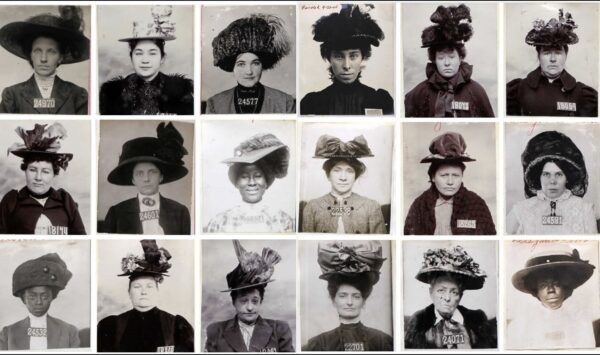
******************************************************************************************************************************** Brownstone Detectives investigates the history of our clients’ homes. The story you are about to read was composed from research conducted in the course of one of those investigations. Do you know the history of YOUR house? ******************************************************************************************************************************** A cursory search through old newspaper archives of the 1890s and early 1900s will produce a large number of incidents whereby patrons of dry goods, and other such stores, were summarily and stealthily robbed by clandestine crooks. Solomon Milkman’s Millinery House – at 442 & 444 Fulton Street – was no exception. A wholesale hat store primarily patronized by women, it soon became the target of thieves looking for money packaged in tiny, easily hidden and transportable containers – purses. The first thieves, though, saw the store itself as the easy target. Usually women, they pilfered mostly feathers, buttons, and other accouterments for the embellishment of women’s hats. In 1890, the first of Milkman’s thieves made the morning papers when a wealthy South Brooklyn woman was caught red-handed, so to speak, stealing goods valued at $3. She would not give her name to the police, as her husband was well-known, so they referred to her as Jane Doe. The police kept her – and her husband’s – identities secret and allowed the wealthy businessman husband of hers to escape humiliation. The following year, in 1891, Nora Duffy, 19, of 79 Sackett Street, was the next identified thief. A “tawdrily dressed young woman,” she was noticed by a detective of Wechsler & […]
BROOKLYN WOMEN LIKE FOREIGN HELP (1915)
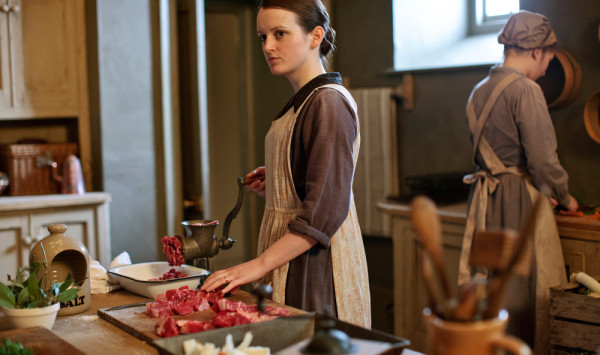
******************************************************************************************************************************** Brownstone Detectives investigates the history of our clients’ homes. The story you are about to read was composed from research conducted in the course of one of those investigations. Do you know the history of YOUR house? ******************************************************************************************************************************** American housewives have always been fond of foreign servants. Brooklyn women were – 100 years ago – more than typical of that trend. Very much like today’s dependence on foreign help (primarily labor from those of Mexican extraction), this trend was likely due – back in Victorian and Edwardian Brooklyn – to an eagerness on the behalf of these women, to have the work in a land where they had few options, as well as to an eagerness, on the behalf of the homeowners, to having cheaper, more dependable labor. Such “help” in the house, according to the New York Times, “freed women from many chores and enabled them to use their time to enhance their moral character and educate themselves – to paint, do needlework, write, engage in physical activity and travel.” The demand, though, for “foreign-speaking girls,” in particular, was “strong,” a 1915 report from a Brooklyn labor office noted. And it was so “especially in Brooklyn,” they noted, where many second generation immigrants lived and thus presented an atmosphere where “a very large number of positions are now waiting for girls who are Polish, German or Scandianvian.” A look at the census of a typical Brooklyn block of the period would produce as many as 10-20 live-in servants, […]
“MORALS OF MINNIE” ON GARFIELD PL. (1912)
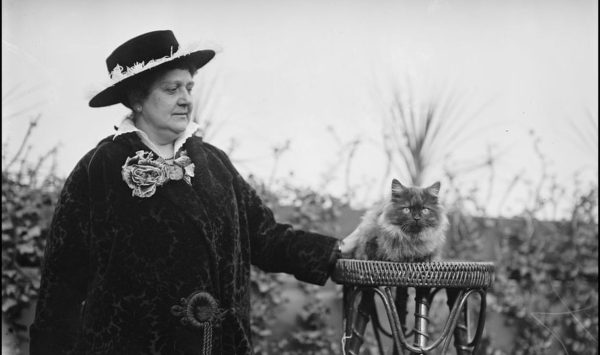
******************************************************************************************************************************** Brownstone Detectives investigates the history of our clients’ homes. The story you are about to read was composed from research conducted in the course of one of those investigations. Do you know the history of YOUR house? ******************************************************************************************************************************** In 1912, a Park Slope cat named Minnie found herself in some hot water. According to a complaint, Minnie’s claws had allegedly performed some serious mutilation to a neighbor’s roof. Here, now, are the details of: THE CURIOUS CASE OF THE CAT THAT CLAWED Location – Garfield Place (between 6th and 7th avenues). Suspect’s address – No. 182 Garfield Place, the Inasmuch Home for Aged Women. Claimant’s address – No. 178 Garfield Place, home of one William Albert Robbins, attorney. Suspect – one “Minnie,” a white Persian, and allegedly “immoral,” cat. THE WANDERINGS OF THE “INASMUCH” Around 1909, the Inasmuch Home for Aged Women moved from its previous location on Bergen Street to its new home at No. 182 Garfield Place in Park Slope between 6th and 7th Avenues. The Inasmuch (sometimes referred to as the “In-As-Much” by sloppy journalists) was a “charity” home for “aged women who are unable to get into other homes,” run through contributions and donations. It was founded in 1905, a few years before the move to Garfield Place. At that time, it existed in the Gowanus at No. 390 Douglass Street, and later moved to (what would become) the Boerum Hill section at No. 226 Bergen Street. By 1920, when it was finally closed, the […]
THE SLOW MUTATION OF “THE REGINA” (1902)
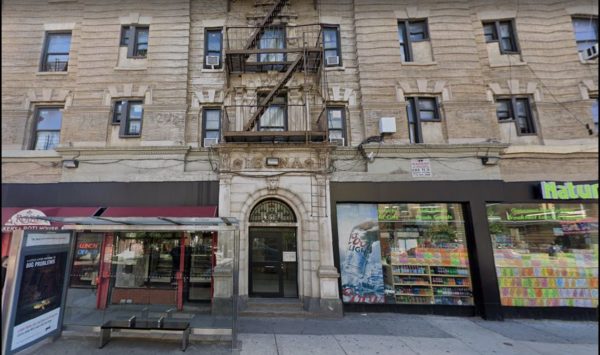
******************************************************************************************************************************** Brownstone Detectives investigates the history of our clients’ homes. The story you are about to read was composed from research conducted in the course of one of those investigations. Do you know the history of YOUR house? ******************************************************************************************************************************** In the historical research work we do for clients, we uncover old photos of their buildings in newspapers and in other archives. It is common to see that changes have taken place with these structures over the years, but these changes are not always readily apparent. Check out the following pics of this Crown Heights apartment building. See what you notice has changed in almost 120 years. Caption: “This is a picture of the Regina, a large apartment house recently bought by John Mollenhauer, the sugar refiner. It stands on the southwest corner of Nostrand avenue and Pacific street. It was built by E. J. Maguire. The building is in the heart of the St. Marks section. The transaction was partly exchange and partly cash. The building is valued at $90,000. Mr. Mollenhauer has invested extensively in property in the St. Marks section, owning several other apartment houses built by Mr. Maguire and many fine private houses. Mr. Mollenhauer lives in the Eastern District.” Follow @BrownstoneDetec Share ———————————————————————————————————————– The Brownstone Detectives Brownstone Detectives is an historic property research agency. Our mission is to document and save the histories of our clients’ homes. From our research, we produce our celebrated House History Books and House History Reports. Contact us today to begin […]